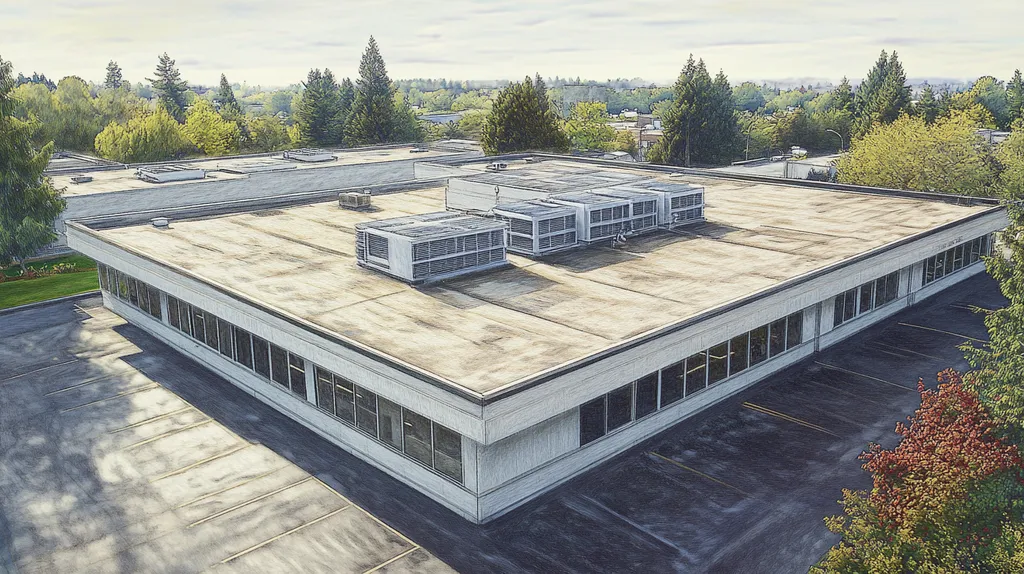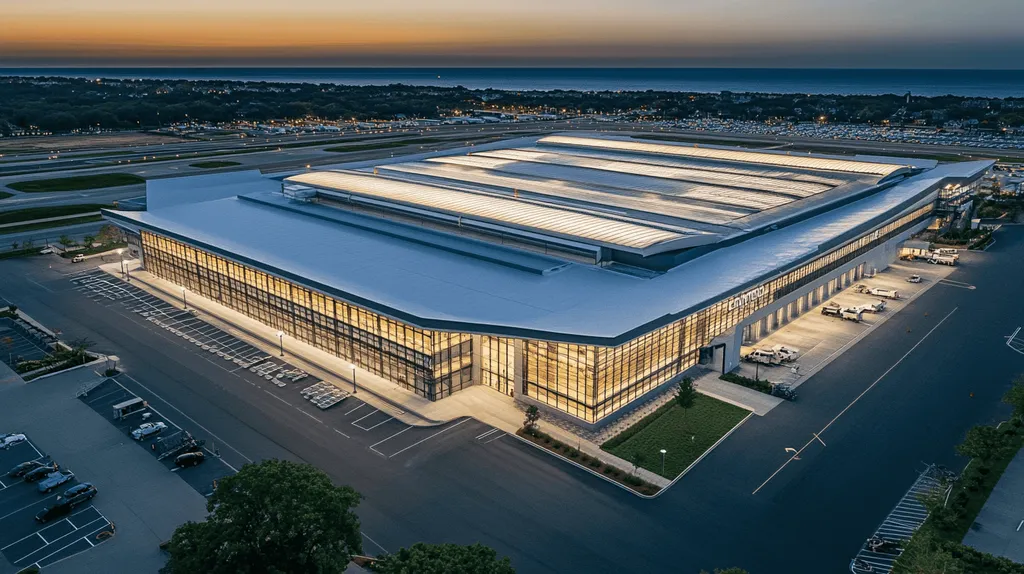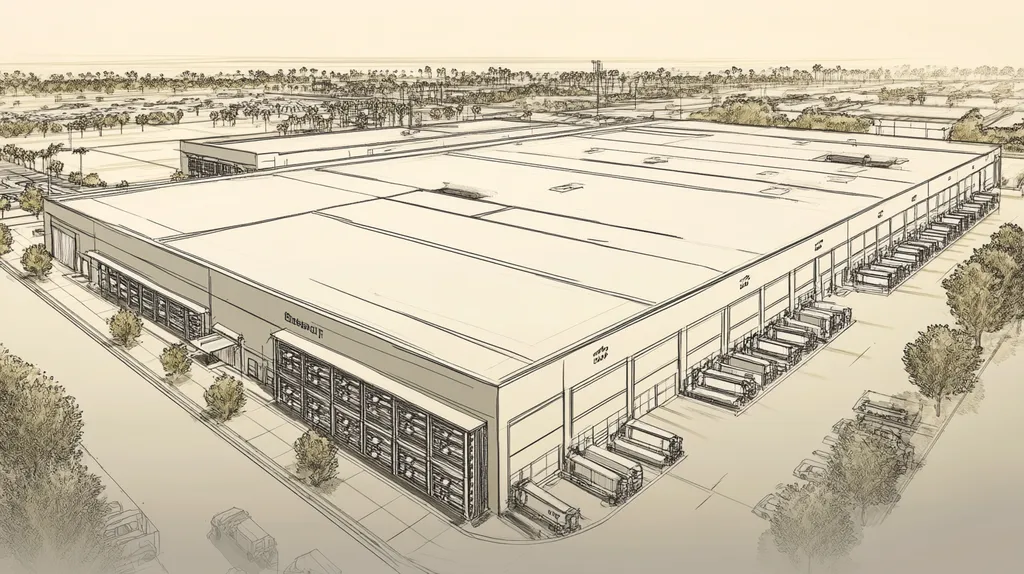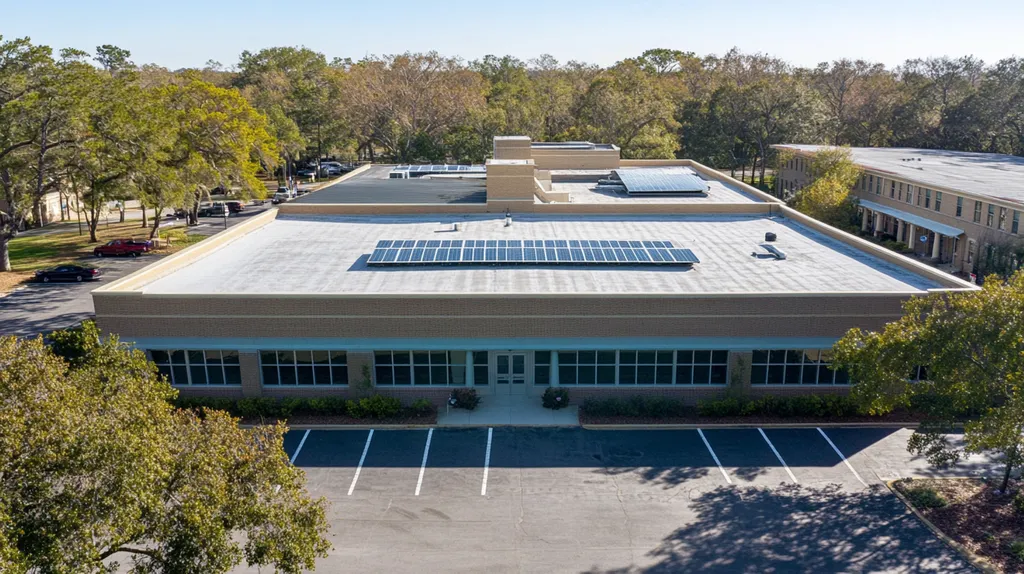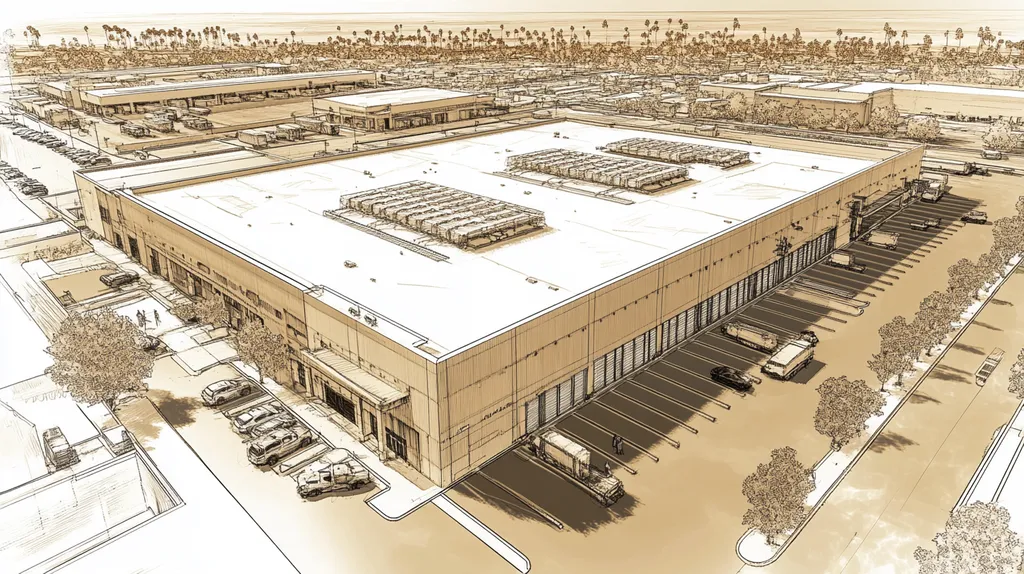In commercial roofing, undetected leaks cost property owners an estimated $3.7 billion annually in repair expenses and structural damage. Despite these staggering losses, widespread misconceptions about leak detection equipment continue to hamper effective maintenance strategies.
Modern detection technologies can identify potential leaks months before visible damage occurs, yet many facility managers rely on outdated visual inspections that miss 60% of developing issues.
This analysis examines the reality behind common leak detection myths, exploring how specialized equipment and evidence-based testing protocols are transforming commercial roof maintenance.
SECTION 1: COMMON MISCONCEPTIONS
Leak detection in commercial roofing is a critical matter that can result in expensive repairs and potential structural failures if not addressed promptly. Many property owners operate under the misconception that all leak detection methods are equally reliable or that it’s straightforward to pinpoint active leaks. Gaining clarity on these commonly held beliefs is essential for informed decision-making regarding roof maintenance, ultimately safeguarding valuable investments.
Electronic Leak Detection Causes Roof Damage
A widespread myth circulating in the industry is that electronic leak detection (ELD) can cause irreversible damage to roofing systems. In fact, ELD employs non-invasive techniques that maintain the roof’s integrity while effectively identifying leaks. This innovative technology precisely locates leaks without necessitating physical alterations, positioning it as one of the safest options in the market.
Many facilities managers have turned to ELD to diminish the need for disruptive inspections. This proactive approach instills confidence, knowing that the roof remains unscathed while potential issues are uncovered early on. Misconceptions surrounding ELD can hinder property owners from harnessing effective leak detection solutions.
By accepting that ELD does not harm roofing materials, owners can make smarter choices. Investing in advanced leak detection technologies ultimately prolongs the lifespan of the roof and cuts down on repair expenses.
Dispelling the myth of ELD-related damage empowers stakeholders to leverage all available opportunities for effective roof maintenance.
Leak Detection Only Finds Active Leaks
Another common misconception is that leak detection is limited to identifying only existing or “active” leaks. While traditional methods primarily target current leaks, advanced detection techniques offer a comprehensive assessment of the overall roof condition and can forecast future leak risks. This forward-thinking strategy is crucial for sound roof management.
Utilizing tools like infrared thermography not only pinpoints moisture presence but also exposes underlying vulnerabilities. Identifying these weaknesses allows for timely repairs, helping to prevent leaks before they develop. Understanding this capability enables property owners to prioritize their maintenance efforts effectively.
Locating potential issues before they escalate into significant leaks is vital for the long-term health of a roof. Investing in thorough leak detection services ensures roofs remain dry and durable over time.
Recognizing that leak detection can also serve preventive purposes allows property managers to stay ahead of costly roof replacements.
All Leak Detection Methods Are Equal
With numerous options available, property owners may assume that all leak detection methods yield the same results. However, the effectiveness of techniques such as visual inspections, flood tests, and electronic detection varies widely, as each comes with its own set of advantages and limitations tailored to specific situations.
For instance, visual inspections offer immediate insights but may overlook hidden leaks. Conversely, electronic methods provide a more comprehensive evaluation but necessitate skilled professionals for accurate execution. Recognizing these differences is essential for making informed choices.
Combining various methods often leads to optimal results. Each leak detection technique serves a distinct purpose and can enhance the effectiveness of others, resulting in thorough assessments.
Awareness of these distinctions empowers property owners to allocate their resources wisely and select the right leak detection method suited to their specific roofing needs.
SECTION 2: PRACTICAL IMPLICATIONS
The integrity of commercial roofs is vital; even minor leaks can lead to extensive damage and staggering repair costs. Water intrusion can result in expenses ranging from thousands to millions of dollars, depending on the severity of the damage and property size. Property owners and facility managers must grasp the serious consequences of neglecting effective leak detection methods. By proactively addressing leak issues, they can save both time and money, thwarting minor problems before they escalate into major liabilities.
Impact on Roof Integrity and Safety
Ignoring leaks can severely compromise a commercial roof’s structural integrity, leading to deterioration and potential failure over time. Water infiltration weakens roofing materials, creating hazards such as collapses or extensive mold growth. A compromised roof not only threatens the building but also poses safety risks for occupants and maintenance staff.
Advanced leak detection technology plays a crucial role in identifying these vulnerabilities early. For instance, infrared thermography can detect hidden moisture without causing further damage. This proactive approach ensures roofs remain secure, reducing the likelihood of extensive structural damage.
Regular inspections using specialized equipment are essential for maintaining roof integrity. By investing in these technologies, property owners protect both their assets and the safety of those working or visiting the premises. A well-maintained roof enhances market value and instills confidence in the property’s safety.
Effects on Building Operations and Downtime
The presence of leaks can significantly disrupt building operations, leading to unexpected downtime. Businesses may be forced to pause activities, resulting in lost revenue and decreased productivity. This is especially critical for facilities that must operate continuously, such as manufacturing plants and hospitals.
Timely leak detection helps prevent such operational interruptions. Utilizing electronic leak detection can identify problems before they worsen, thereby minimizing disruptions. Keeping the working environment stable is essential for maintaining employee efficiency.
Moreover, extended downtime not only impacts immediate profits but also risks long-term client relationships. Frequent operational interruptions can lead clients to perceive a company as unreliable. By prioritizing effective leak detection, businesses safeguard their reputation while promoting operational efficiency.
Strategically investing in leak detection technologies supports seamless operations and fosters a positive business environment.
Consequences for Maintenance and Repair
Inadequate leak detection practices can complicate both maintenance and repair efforts. Without accurate leak location information, service teams may squander time addressing symptoms rather than fixing the underlying issues. Traditional methods often lead to repetitive repairs that fail to resolve persistent problems.
Modern leak detection equipment streamlines maintenance procedures by accurately pinpointing leak sources. This enables facility managers to implement targeted repairs, significantly reducing costs. This efficiency is especially crucial for large commercial buildings with intricate roofing systems.
Additionally, improved leak detection extends the lifespan of roofing materials. By addressing minor issues early, the need for major repairs diminishes, translating into lower long-term operational costs.
Ultimately, investing in advanced leak detection is not merely about correcting existing problems; it is about establishing a sustainable maintenance strategy that benefits the entire facility.
SECTION 3: COST OF MISINFORMATION
The consequences of misinformation in leak detection are not just theoretical; they can lead to severe financial ramifications for businesses. Undetected leaks can cause extensive damage, often culminating in soaring repair costs. Industry experts indicate that a single unresolved leak can lead to thousands of dollars in unforeseen expenses, further threatening operational continuity. Property owners and facilities managers must recognize the gravity of this issue to make informed decisions that protect their investments.
Financial Losses Due to Undetected Leaks
The financial ramifications of undetected leaks can be staggering. Leaks that go unnoticed tend to cause cumulative damage, resulting in repair costs that far exceed those of timely interventions. For instance, a small, unaddressed leak may initially present as minor water stains but can quickly escalate into expensive mold remediation and structural repairs.
Beyond the direct costs, businesses can incur additional financial losses if leaks damage electrical systems or deplete inventory. As the time taken to address these leaks increases, the severity of the financial impacts amplifies. Utilizing proactive leak detection technology can help prevent these financial pitfalls by identifying problems early. Investing in specialized leak detection tools is essential for safeguarding the bottom line and preserving operational efficiency.
In short, ignoring leak detection not only raises immediate repair costs but can also impose escalating financial burdens over time.
Increased Repair Costs Over Time
If leaks remain undetected, the required repair costs can grow exponentially. Initial repairs may seem manageable, but as damage expands, the resources needed to rectify it can increase dramatically. For example, a small roof leak can trigger damage to insulation and ceiling tiles, leading to significantly higher future repair bills.
Additionally, delayed leak identification often results in severe deterioration of roofing materials. This could mean facing a complete roof replacement instead of merely repairing specific areas, which can incur costs many times higher. Research indicates that proactive maintenance and early leak detection can slashing repair costs by up to 50% over time.
Property managers must be acutely aware that misinformation surrounding leak detection can slow critical actions. Sticking to outdated methods will only increase repair costs and perpetuate a cycle of neglect. Timely investments in accurate leak detection technology can help control these rising expenses.
Insurance and Liability Implications
In the event of a significant leak, navigating insurance claims can become complex and contentious. If damage results from a lack of preventive measures, insurers may deny claims or significantly reduce payouts. This places property owners in a precarious position, as they may be held liable for damages, including losses suffered by tenants or clients.
Liability extends beyond financial consequences; businesses may also face lawsuits if neglecting leak detection leads to health hazards, such as mold growth affecting occupants. Such situations not only jeopardize finances but can also damage a company’s reputation.
Utilizing advanced leak detection technology can significantly mitigate liability risks. By keeping detailed records of maintenance and detection efforts, property owners demonstrate due diligence in their operations. This proactive approach can safeguard against potential lawsuits and enhance overall operational resilience.
Therefore, misinformation surrounding leak detection yields profound implications that stretch into insurance and liability realms. Awareness and corrective action should be prioritized to avoid costly repercussions.
SECTION 4: REALITY CHECK
In the realm of commercial roofing, effective leak detection is imperative. A seemingly minor leak can precipitate extensive damage, leading to repair costs that may reach thousands of dollars, as well as reduced productivity. Alarmingly, studies indicate that approximately 70% of roofs may harbor leaks that go unnoticed. Understanding the mechanics of electronic leak detection, the various methods at hand, and the indispensable role of trained professionals is vital for ensuring thorough roof maintenance.
How Electronic Leak Detection Works
Electronic leak detection (ELD) represents a significant advancement over traditional leak detection techniques. This method applies a low-voltage electric current to the roof membrane, enabling trained professionals to identify compromised areas with precision by measuring electrical resistance. This allows for accurate localization of leaks without invasive testing.
Unlike older approaches, such as water testing, ELD minimizes disruptions to the building’s operations. This efficiency allows for quicker repairs, reducing downtime and facilitating smoother maintenance procedures.
A critical aspect of ELD is its capacity to detect leaks that may not visibly manifest. Early identification of hidden leaks can prevent minor issues from escalating into significant structural problems. Investing in ELD promotes a more sustainable roofing management strategy, ultimately prolonging the lifespan of the roof and enhancing overall building integrity.
Types of Leak Detection Methods Available
There are several leak detection methods available, each tailored for specific circumstances and offering unique advantages. Infrared thermography, for example, leverages temperature variations to identify moisture trapped beneath roofing materials. As a non-invasive technique, it is particularly effective for flat roofs.
Another valuable method involves tracer gas detection, where a harmless gas is introduced into the roofing system. By monitoring the gas’s escape points, professionals can accurately identify leaks. Often used in tandem with ELD, this technique enhances the precision of leak location.
Conductivity testing is popular among roofs equipped with dielectric membranes. This method involves probing the roof surface to assess conductivity, indicating possible breaches. The combination of these various detection methods leads to a comprehensive understanding of roof conditions, enabling effective leak management.
Choosing the appropriate detection method requires an understanding of a building’s individual characteristics. Property owners need to weigh the strengths and weaknesses of each technique to ensure thorough and effective leak investigations.
Importance of Trained Professionals
Despite the advanced technology available, the expertise of trained professionals remains crucial in leak detection. Misinterpreting data can lead to inaccurate conclusions, necessitating unnecessary repairs. Skilled technicians are adept at analyzing results and assessing the overall condition of roofing systems.
Investing in professionals well-versed in diverse leak detection methods increases the reliability of outcomes. Their training ensures that detection equipment is utilized effectively, maximizing the potential of available technology and preventing costly mistakes in the future.
Furthermore, experienced professionals can provide valuable insights into the general health of a roofing system. By recommending preventative maintenance informed by their findings, they contribute to the long-term sustainability of the roof and the building as a whole. Knowledgeable inspectors serve as an essential link in developing improved roofing strategies.
The synergy of advanced leak detection technology and skilled professionals leads to superior results. This combination empowers property owners to manage risks effectively, safeguarding their investment and the integrity of their buildings.
SECTION 5: EVIDENCE-BASED ALTERNATIVES
Effective leak detection in commercial roofing is a pressing necessity. Traditional methods often yield inaccurate results, resulting in costly damages and safety risks. Industry reports suggest that inadequate leak detection can trigger a concerning 15% decrease in a building’s overall value. This section delves into the differences between high and low voltage leak detection methods, highlights advanced technologies transforming the industry, and presents case studies showcasing successful implementations of these innovative approaches.
High Voltage vs. Low Voltage Leak Detection
Understanding high voltage and low voltage leak detection methods is essential for effective roof management. High voltage testing is commonly employed for flat roofs, creating an electrical charge to accurately locate leaks within high-resistance roofing materials. This technique can be particularly effective for distinguishing faults in complex roofing systems.
In contrast, low voltage testing utilizes moisture levels and conductivity to detect leaks without introducing high electrical risks. This safer method is often favored by facilities managers due to its minimal impact on roof materials and the surrounding environment.
Each method possesses specific advantages and limitations based on the building’s unique requirements. Selecting the appropriate detection technique can result in significant time and cost savings. Additionally, the choice of method may depend on factors like roof composition and environmental conditions.
Many roofing professionals find that a combination of high and low voltage methods yields the most comprehensive results. This integrated approach enhances accuracy and ensures thorough inspections, crucial for effective leak management.
Advanced Technologies in Leak Detection
Emerging technologies are reshaping the landscape of leak detection in commercial roofing. Infrared thermography stands out as a leading technique, which detects moisture buildup by measuring temperature variations across roof surfaces. Using high-resolution infrared cameras, professionals can spot issues before they become visible, significantly reducing risk (source: Building Diagnostics Group).
Drones equipped with high-resolution imaging capabilities further enhance inspection processes. These aerial devices can efficiently cover large roof areas, capturing detailed images that facilitate thorough assessments. Implementing drone technology not only streamlines inspections but also enhances safety by reducing the need for manual roof access.
Acoustic leak detection is another advanced technique gaining popularity. This method listens for sounds associated with water intrusion, enabling technicians to pinpoint leak locations with remarkable precision. Incorporating these advanced strategies fosters a proactive maintenance culture that can mitigate significant long-term damage.
Embracing these next-generation technologies can substantially lower inspection times and costs, ultimately benefiting the overall sustainability and longevity of commercial roofing systems.
Case Studies of Successful Implementations
Real-world case studies illustrate the profound benefits of evidence-based leak detection practices. A notable instance involved a manufacturing facility beset by chronic leaks. By combining infrared thermography with low voltage leak detection, the facility was able to accurately identify problem areas, resulting in timely and effective repairs.
Following these interventions, the facility reported a remarkable 30% reduction in energy costs, attributable to minimized water damage and improved roof performance. Early leak management preserved the structural integrity of the roof and significantly enhanced operational efficiency.
Another compelling case study focused on a commercial office building with a complex, multi-layered roofing system. By implementing drone surveys in conjunction with acoustic detection, the facility manager successfully detected leaks that had previously eluded manual inspections, leading to faster resolutions.
These examples vividly demonstrate how evidence-based leak detection strategies can yield significant financial, operational, and safety benefits. Investing in advanced technologies and methods is essential for effective roof management and long-term asset protection.
SECTION 6: TEST AND VERIFY
Accurate leak detection is crucial for maintaining the longevity and integrity of commercial roofs. Studies have shown that undetected leaks can lead to repair costs that escalate to over 10% of a property’s total replacement cost. Property owners and facility managers must prioritize efficient testing and verification methods to mitigate these risks effectively. This section delves into methods for conducting thorough leak detection tests, the best practices for interpreting results, and the significance of establishing regular maintenance schedules.
Conducting Accurate Leak Detection Tests
Utilizing specialized equipment for leak detection is vital for achieving reliable results. Techniques such as infrared thermography, electronic leak detection (ELD), and acoustic monitoring are designed to target specific vulnerabilities in roofing systems. Each method allows for quick identification of leaks across different roofing materials, ensuring that hidden issues are not overlooked.
When selecting a testing method, property owners should consider the type of roofing materials and the building’s usage. For example, infrared thermography excels in flat roof applications, while electronic leak detection is ideal for membrane roofs. Furthermore, conducting tests during varied weather conditions can reveal leak paths that may be influenced by rain or temperature fluctuations.
The frequency of leak detection tests is also critical for preserving roof integrity. It is advisable to conduct tests at least semi-annually or after severe weather events to catch minor issues before they develop into significant problems. This proactive approach helps minimize repair costs and prolongs the roof’s lifespan.
Engaging trained professionals for testing ensures adherence to the latest technology and best practices. Their expertise allows for accurate assessments and management of complex roofing systems. Property owners should prioritize partnerships with reliable service providers to strengthen their roofing strategies.
Interpreting Test Results and Data
Understanding the results from leak detection tests is essential for informed decision-making. Reports often specify both the presence and location of leaks, but they can also unveil patterns of vulnerability that may not be immediately visible. Careful analysis of the results enables property managers to prioritize urgent repairs effectively.
Statistical analysis can highlight trends over time, allowing facility managers to anticipate potential future issues. For instance, recurring leaks in a particular zone may signal deeper structural problems that require comprehensive evaluation. Collaborating with roofing experts can further clarify these interpretations and support strategic planning.
Visual representation of data, through graphs and charts, can simplify complex information, making it accessible for stakeholders. Facility managers can present their findings to ownership groups or finance teams more effectively, ensuring all parties understand the urgency surrounding necessary repairs or replacements.
Moreover, maintaining thorough documentation of test results is a critical aspect of asset management. Historical testing data provides valuable insights for future assessments and can serve as evidence during insurance claims or warranty disputes.
Regular Maintenance and Inspection Schedules
Consistent maintenance and inspection schedules are paramount for prolonging the life of a commercial roof. Implementing a routine can help identify minor issues before they escalate into larger, more costly problems. A comprehensive plan should include seasonal inspections along with responsive measures following severe weather events.
Industry guidelines recommend conducting thorough inspections at least twice a year, particularly during spring and fall, to ensure the roof is optimized for changing conditions. Each inspection should scrutinize components for signs of wear, punctures, and areas prone to water pooling, where intervention may be necessary.
Integrating regular inspections with leak detection tests enhances the overall effectiveness of maintenance strategies. Insights garnered from testing inform more targeted maintenance efforts, significantly reducing the likelihood of extensive damage and ensuing repair costs.
Ultimately, fostering a culture of maintenance and verification leads to improved roof performance and asset value. Property owners benefit from reduced risks and extended roof lifespan, resulting in a notable return on investment that should not be underestimated.
The Bottom Line
With commercial roof leaks causing $3.7 billion in annual damages, the stakes for accurate leak detection have never been higher.
Modern electronic detection equipment, when properly deployed by trained professionals, can identify potential issues months before visible damage occurs – yet 70% of commercial properties still rely on outdated visual inspections that miss the majority of developing problems.
The evidence demonstrates that specialized leak detection technology, from infrared thermography to electronic conductivity testing, delivers superior results while protecting roof integrity.
For property owners and facility managers, embracing these advanced detection methods isn’t merely about preventing water damage – it’s about safeguarding their entire building investment through data-driven, preventive maintenance strategies that extend roof lifespans and reduce long-term costs.
FREQUENTLY ASKED QUESTIONS
Q. What misconceptions exist about leak detection in commercial roofs?
A. Many believe that all leak detection methods are equally reliable. Additionally, some think electronic leak detection can damage roofs, while it actually uses non-invasive techniques, preserving integrity.
Q. How do leaks impact the integrity of commercial roofs?
A. Ignoring leaks can compromise the roof’s structural integrity, leading to serious hazards like collapses or extensive mold growth. Proactive leak detection ensures early identification of vulnerabilities for timely repairs.
Q. What financial losses can arise from undetected leaks in industrial roofs?
A. Undetected leaks can lead to escalating repair costs and significant financial losses over time. For example, a small leak can escalate into substantial mold remediation and infrastructure repairs if neglected.
Q. How does electronic leak detection work in commercial roofing?
A. Electronic leak detection involves applying a low-voltage electric current to the roof membrane. This technology enables professionals to accurately identify compromised areas by measuring electrical resistance without invasive testing.
Q. What advanced technologies are improving leak detection accuracy?
A. Technologies like infrared thermography, drones, and acoustic leak detection are enhancing accuracy. These methods allow for non-invasive assessments and improve detection of hidden issues, leading to timely repairs and better maintenance.
Q. How often should leak detection tests be conducted on commercial roofs?
A. It is advisable to conduct leak detection tests at least semi-annually, or after severe weather events. This proactive approach helps to identify minor issues before they escalate, saving costs and ensuring the roof’s longevity.
Q. Why is professional expertise critical for leak detection services?
A. Professional expertise ensures accurate interpretation of leak detection results, minimizing incorrect conclusions that could lead to unnecessary repairs. Skilled technicians leverage advanced technologies to optimize the effectiveness of leak detection methodologies.


